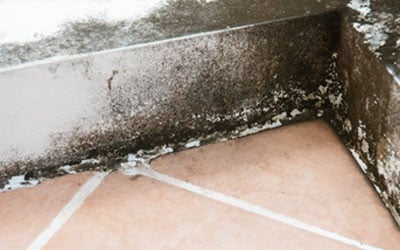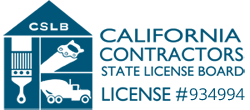
Mold remediation is a vital aspect of property maintenance, as unseen mold growth can lead to a variety of issues, jeopardizing the health of both your property and its inhabitants. To ease your concerns and provide valuable information, we have compiled a list of frequently asked questions about mold remediation and its impact on your property’s health. From recognizing the signs of mold growth to understanding the remediation process, this article aims to equip Southern California property owners with the knowledge they need to tackle mold-related issues confidently.
By addressing these frequent concerns and doubts, property owners can make informed decisions and rely on the expertise of Restoration Masters for comprehensive, effective mold remediation and prevention services. With awareness and prompt action, you can ensure a healthier environment for your property and its occupants.
1. What is Mold Remediation, and Why is it Important?
Mold remediation is the process of identifying, removing, cleaning, and preventing mold growth in an affected property. It involves the use of specialized equipment, cleaners, and techniques to address mold damage and its underlying causes. Mold remediation is crucial because mold can cause structural damage to your property and pose health risks to its inhabitants. Mold exposure has been linked to respiratory issues, allergies, and other health problems, particularly for children, the elderly, and people with compromised immune systems [1]. Implementing prompt and effective mold remediation increases the safety, longevity, and value of your property.
2. What Causes Mold to Grow in Southern California Properties?
Mold growth is primarily caused by excessive moisture in the indoor environment. Southern California’s climate, which consists of warm temperatures and high humidity levels, increases the risk of mold growth. Common causes of mold in Southern California properties include:
– Water damage from leaks, floods, or other water intrusions.
– Condensation on cold surfaces, such as windows and pipes.
– Poor ventilation in areas with high humidity like bathrooms, laundry rooms, and kitchens.
– Slow or unnoticed leaks in roofs, walls, and plumbing systems.
Addressing these sources of moisture is essential to prevent mold growth and maintain a healthy indoor environment.
3. How Can I Recognize the Signs of Mold Growth?
Mold is not always visible, so recognizing signs of its presence is crucial to prevent further damage. Common indicators of mold growth include:
– Musty or unpleasant odors, particularly in damp or poorly ventilated areas.
– Visible mold colonies, which can vary in color (black, green, white, or gray) and texture (fuzzy or slimy).
– Respiratory symptoms, allergies, or other health issues exacerbated when in the property.
– Water stains, discoloration, or peeling paint on surfaces, indicating potential moisture problems.
If you notice any of these signs, it’s essential to contact a mold remediation professional like Restoration Masters to assess and address the issue.
4. How is Mold Remediation Conducted?
Mold remediation is a multi-step process that involves identifying the extent of mold growth, addressing the underlying moisture problem, cleaning and removing mold-infested materials, and taking preventive measures. The process typically includes:
– Inspection: Mold remediation professionals will thoroughly inspect the property to identify any visible or hidden mold growth and moisture sources.
– Containment: Affected areas are sealed off to prevent the spread of mold spores during the remediation process.
– Moisture Removal: Underlying moisture problems must be addressed to inhibit future mold growth. This could involve repairing leaks, improving ventilation, or adjusting humidity levels.
– Mold Removal: Mold-infested materials are either cleaned, removed, or treated, depending on the extent of the damage and the material type. HEPA-filtered vacuums, air scrubbers, and fungicides may be used to remove mold spores and kill remaining mold colonies.
– Cleaning and Sanitizing: The affected area and any salvageable contents are cleaned and sanitized to remove any residual mold spores, stains, or odors.
– Restoration: If necessary, reconstruction or restoration of damaged structures may be required to return the property to its pre-loss condition.
5. Can I Tackle Mold Remediation Myself?
While DIY mold removal may be tempting, it’s generally not recommended for anything beyond small, surface-level mold. Professional mold remediation is advisable for several reasons:
– Safety: Mold can pose health risks, especially during the removal process, when mold spores are released into the air. Professionals have the necessary safety gear and equipment to protect themselves and minimize the risk of spreading mold spores.
– Proper Mold Removal: Professionals have the training and experience to conduct mold remediation effectively, preventing further damage or recurrence.
– Identifying Hidden Mold: Experts can locate and address hidden mold growth, ensuring that all mold problems are thoroughly addressed.
– Insurance Compliance: Most insurance policies require professional mold remediation to maintain coverage for mold-related losses.
6. How Can I Prevent Future Mold Growth in My Property?
Following a successful mold remediation, it’s crucial to take preventive measures to minimize the risk of future mold growth. These steps include:
– Regularly inspecting your property for signs of moisture problems and addressing them promptly.
– Ensuring proper ventilation, especially in high-humidity areas such as bathrooms, laundry rooms, and kitchens.
– Installing and maintaining dehumidifiers to regulate indoor humidity levels.
– Using mold-resistant materials during property construction or renovation, such as moisture-resistant drywall, flooring, and paint.
– Cleaning and maintaining gutters and downspouts to direct water away from the property’s foundation.
Proactive prevention measures can significantly reduce the likelihood of recurring mold growth and help maintain a healthier indoor environment.
Protect Your Property with Expert Mold Remediation Services
Understanding the dangers of mold growth and the significance of timely mold remediation is crucial for maintaining a healthy indoor environment in Southern California properties. With the expertise of Restoration Masters, you can rest assured that mold growth will be properly addressed, mitigating any associated risks to both the structure of your property and the health of its occupants.
Don’t let mold problems fester and damage your property – contact Restoration Masters today for professional mold inspection and remediation services. Our team of certified professionals is committed to ensuring that your property is mold-free and safeguarded against future growth, allowing you to enjoy a safer and healthier living or working environment. So, when it comes to dealing with mold and water damage restoration, trust the experts at Restoration Masters to protect your property investment and your health.





